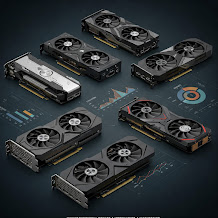ASIC vs. GPU for AI: Which is Better?
Artificial intelligence (AI) is transforming industries, and the hardware that supports it is as important as the algorithms themselves. The two most talked about options for AI computing are ASIC (application-specific integrated circuits) and GPU (graphics processing units). Each has its strengths and weaknesses, and choosing the right one can significantly impact the performance, efficiency, and cost of your AI.
Key Differences Between ASIC and GPU
ASICs are purpose-built chips designed for specific tasks. They provide high efficiency, low power consumption, and unmatched performance for targeted AI applications. However, they are expensive to develop and lack flexibility.
Originally designed for graphics rendering, GPUs have become essential for AI workloads due to their ability to handle parallel processing. They are widely available, programmable, and versatile, making them ideal for training an AI model. However, they consume more power and are not as optimized as ASICs for specific AI tasks.
Pros and Cons of ASICs and GPUs in AI
Advantages of ASICs
Excellent performance – optimized for AI tasks such as deep learning inference, providing faster results than GPUs.
Energy efficient – consumes less power compared to GPUs, reducing long-term operating costs.
Lower latency – processes AI tasks with minimal latency, making it ideal for real-time applications.
Disadvantages of ASICs
High development costs – developing a custom chip can cost anywhere from $30 million to $100 million.
Limited flexibility – designed for specific tasks, making them unsuitable for other AI applications.
Limited availability – typically developed by large tech companies for internal use.
GPU advantages
Versatile – suitable for a variety of AI tasks, including deep learning, computer vision, and NLP.
Widely available – manufactured by companies like NVIDIA and AMD, making them affordable for companies and individuals.
Faster AI development – no need for a custom chip design, reducing time to market.
GPU disadvantages
Higher power consumption – requires more power, resulting in higher operating costs.
Poor inference performance. While GPUs are great for training AI models, they are not as efficient as ASICs for real-time AI processing.
Performance, cost, and market trends
AI performance is often measured in TFLOPS (trillion floating point operations per second). Google’s TPU v4 (ASIC) achieves around 275 TFLOPS, while NVIDIA’s H100 GPU can reach 700 TFLOPS in FP8 mode. Tesla’s Dojo ASIC outperforms many commercial GPUs, delivering 362 TFLOPS.
The cost of AI hardware varies greatly. High-end GPUs like the NVIDIA H100 can cost $30,000, while the AMD MI300X costs $10,000. ASICs, on the other hand, are not available for purchase, as they are typically built for internal use by companies like Google and Tesla.
A major trend in AI computing is the move to proprietary AI chips. Companies like Apple, Meta, and Amazon are developing their own ASICs to improve AI performance. Meanwhile, cloud AI services like Google Cloud TPU and AWS Inferentia provide access to powerful ASICs without requiring users to invest in hardware.
What this means for AI development
For startups and AI researchers, GPUs remain the best choice due to their affordability and flexibility. Developers can train AI models on consumer-grade GPUs like the NVIDIA RTX 4090 before scaling them up with cloud-based AI resources.
For large enterprises, ASICs offer long-term benefits in energy efficiency and performance. Companies that process huge amounts of AI data, like Tesla with its Dojo AI chip, gain a competitive advantage by using custom-designed hardware.
For AI enthusiasts, GPUs are the most practical option. They offer superior performance without the need for expensive infrastructure. Additionally, cloud solutions allow users to experiment with AI on high-performance ASICs without a significant upfront investment.
What Industry Leaders Are Saying
Elon Musk (Tesla, Dojo AI Chip) – Believes ASICs will revolutionize AI training by making large-scale machine learning more efficient.
Jensen Huang (CEO, NVIDIA) – Says GPUs remain the backbone of AI computing, providing the flexibility needed SICs are shaping the future of AI performance. As technology advances, expect AI hardware to become more powerful, energy-efficient, and affordable.
Stay up to date with AI Trends
Want to stay up to date with the latest advancements in AI hardware? Follow TECHNO - AN for expert insights, AI trends, and a deep dive into the world of AI!












Comments
Post a Comment